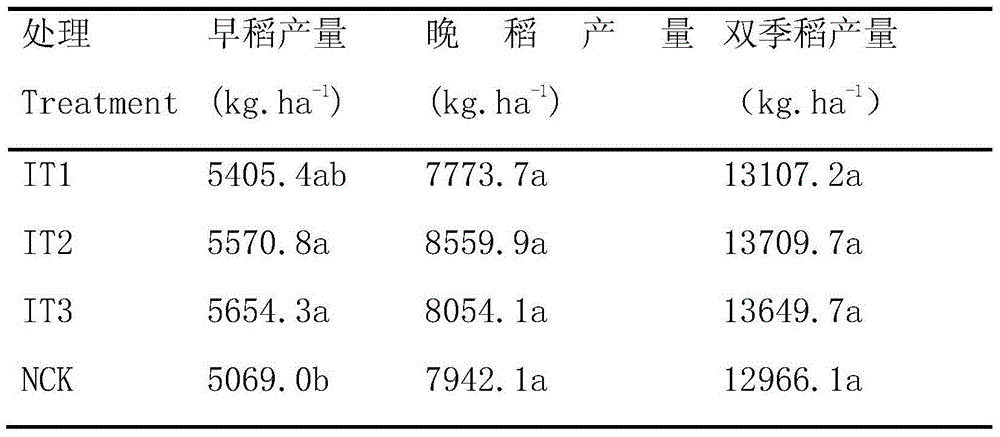Method for increasing yield of double cropping rice by turnover and fertilizer saving of Astragalus sinicus L. and straw in rice field
A technology of Vetch and double-cropping rice, applied in the fields of botanical equipment and methods, application, rice cultivation, etc., can solve the problems of deterioration of physical and chemical properties, decreased fertility, environmental pollution, etc., and achieves the goal of reducing fertilizer input and increasing yield. Effect
- Summary
- Abstract
- Description
- Claims
- Application Information
AI Technical Summary
Problems solved by technology
Method used
Image
Examples
Embodiment 1
[0026] The return rate of milk vetch is 30000kg / hm 2 In the late rice season, the early rice stalks were fully returned to the field. Under the same nitrogen input conditions, compared with conventional fertilization measures, the nitrogen fertilizer input was reduced by 38.2%, and the early rice grain yield was increased by 6.64%, which had no significant impact on the late rice grain yield. The total yield of rice grains is 1.09%. It shows that the quantity of milk vetch returning to the field is 30000kg / hm 2 Compared with conventional fertilization, returning full amount of early rice straw to the field in the late rice season can save urea input, and at the same time, the yield of late rice is not significantly reduced, and the yield of early rice and the total yield of double-cropping rice have a certain effect.
Embodiment 2
[0028] The return rate of milk vetch is 22500kg / hm 2 In the late rice season, the early rice stalks were returned to the field in full. Under the same nitrogen input conditions, compared with conventional fertilization measures, the nitrogen fertilizer input was reduced by 32.5%, the grain yield of early rice was increased by 9.90%, and the grain yield of late rice was increased by 7.78%. Yield 5.74%. It shows that the quantity of milk vetch returning to the field is 22500kg / hm 2 Compared with conventional fertilization, the full amount of early rice straw returned to the field in the late rice season did not significantly reduce the yield. While saving urea input, the yield of early and late rice seasons and the total yield of double-cropping rice had a certain effect.
Embodiment 3
[0030] The return rate of milk vetch is 15000kg / hm 2 In the late rice season, the early rice stalks were fully returned to the field. Under the same nitrogen input conditions, compared with the conventional fertilization measures, the nitrogen fertilizer input was reduced by 24.5%, the grain yield of early rice increased by 11.55%, and the grain yield of late rice increased by 1.41%. Yield 5.27%. It shows that the quantity of milk vetch returning to the field is 15000kg / hm 2 Compared with conventional fertilization, the full amount of early rice straw returned to the field in the late rice season did not significantly reduce the yield. While saving nitrogen fertilizer input, the yield of early and late rice seasons and the total yield of double-cropping rice had a certain effect.
[0031] Table 1. Experimental treatments and fertilization schemes
[0032]
[0033] Table 2. Effects of different milk vetch and early rice straw returning amounts on double-cropping rice yield...
PUM
 Login to View More
Login to View More Abstract
Description
Claims
Application Information
 Login to View More
Login to View More - R&D
- Intellectual Property
- Life Sciences
- Materials
- Tech Scout
- Unparalleled Data Quality
- Higher Quality Content
- 60% Fewer Hallucinations
Browse by: Latest US Patents, China's latest patents, Technical Efficacy Thesaurus, Application Domain, Technology Topic, Popular Technical Reports.
© 2025 PatSnap. All rights reserved.Legal|Privacy policy|Modern Slavery Act Transparency Statement|Sitemap|About US| Contact US: help@patsnap.com



